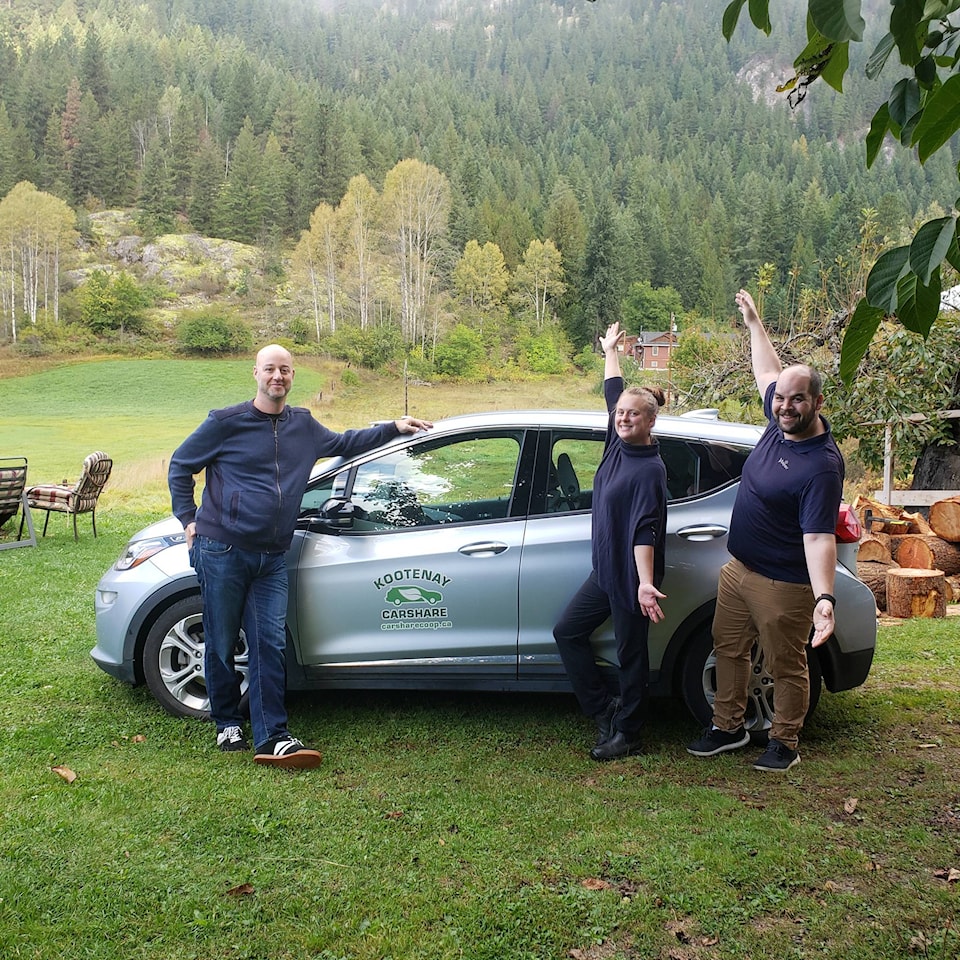By Brittny Anderson, Keith Page, and Jesse Woodward
Council Comment
The future of transport is clean, quiet and powered by electrons.
That was the conclusion we came to while driving an electric vehicle (EV) to the Union of B.C. Municipalities conference in Vancouver. A zero-emissions road trip was a first for each of us and we wanted to share our experience.
The EV was booked by the City of Nelson through the Kootenay Carshare Cooperative. The Kootenay Carshare has purchased two new Hyundai Konas, which will expand clean transportation opportunities for their members by the end of 2019.
We started our 659-kilometre journey from Nelson to Vancouver on a beautiful autumn Sunday, a day before the conference started, with ample time to deal with any unforeseen circumstances we may encounter while travelling in an electric vehicle.
We used an app called Plugshare that provides information on where to plug in, the time needed for charging and distances to the next charging stations. We used ABetterRoutePlanner.com to map out an optimal path. Both are very helpful tools indeed.
As we headed into the mountains and passes on the way to Vancouver there was some nervous excitement about how it was going to all work out but we soon found that the car itself, a Chevy Bolt, was an excellent transportation machine with a 340-km range at 90 per cent charge. This car is quiet, quick while passing, and nice to drive.
The handling was fun and sporty due to the battery packs’ low centre of gravity and the acceleration was instantaneous.
As the three of us made our way, it soon became apparent that EV travel was, in many ways, a far superior form of travel than the fossil fuel powered alternative. The biggest bonus is travelling from point A to B without adding GHGs to the atmosphere. With GHG concentrations at 414.5 PPM, levels that have not been seen on earth for more than three million years and continuing to climb, EVs are one way of reducing our carbon footprint.
Over the past eight years, the B.C. government’s Clean Energy Vehicle program has supported the addition of 5,000 EVs onto our roads. This program includes the following investments: vehicle point-of-sale discounts, charging infrastructure, hydrogen fuelling station, fleet incentives for adopting CEVs and research, training, and public outreach. The City of Nelson currently has Level 2 charging stations, which will charge an EV in a few hours and is installing a new 50 kW DC Fast charger by the NDCC, which can fully charge an EV in less than an hour.
The trip was smooth but we did run into some unexpected bumps in the road. When we arrived at our first charging station in Greenwood we were surprised to find a New Jaguar I-Pace EV charging at the station, a situation that hadn’t occurred to us and additional time that we had not factored in.
We waited at the charging station as we had no way of knowing when the owner would return. The EV said it had 30 minutes to 100 per cent but many owners only charge to 80 per cent. When the owner returned it gave us the opportunity to ask her about her experience as an EV owner.
As a former oil and gas sector worker she said she felt like a traitor but she loved her EV Jag. Truth be told we loved the Chevy Bolt but would have traded it for the Jag in a heartbeat. As soon as we plugged in, a Nissan Leaf with a 130-km range pulled up behind us. The small community of Greenwood, with one Level 2 and one DC Fast charger, needs more charging infrastructure to meet the demand, a theme that persisted for the duration of our journey.
There are many different kinds of charging suppliers: Fortis, BC Hydro, Tesla, Flo and even unbranded stations. The varieties of different options can make the charge-up experience a little too complicated as each system has a different app or card to pay. In the future we expect these systems to be better integrated and simplified for more user-friendly customer experience.
Currently, you have to sign up to use these various platforms, which is annoying and time-consuming, particularly when the cell phone service is spotty or non-existence, or for people who do not have cell phones. In the future, we expect to see pay-at-the-charger models where people will be able to use their cards to pay.
We noticed that on a beautiful day, the locations of the charging stations were less important. At the top of the summit? No problem, what a great opportunity to stretch your legs, breath in some fresh mountain air and take a walk.
But as we sat at Anarchist Summit in the muggy car, as the rain poured while eating our lunch we wished that communities like Osoyoos had charging stations compatible with our EV. We anticipate that EV stations will provide an economic boost for small communities as a 30-to-60 minute charge is a perfect time to enjoy a meal or do some shopping or even take a quick tour of a local museum or art gallery.
The biggest lesson we learned is that planning ahead is important during EV road trips. This will likely be true until charging stations are as prolific as gas stations. We also noticed that not all kilometres are created equal! EV distance capacity fluctuates with topography and speed changes. Like any epic road trip, we had some ups and we had some downs but emitting zero GHGs on a round trip to Vancouver was certainly the best part of our experience. We all agree that EVs have finally arrived.
Also, you should probably join (or get your employer to join) Kootenay Carshare so your next road trip can be in a pollution-free EV!
BrittnyAnderson, Keith Page, and Jesse Woodward are Nelson city councillors.
